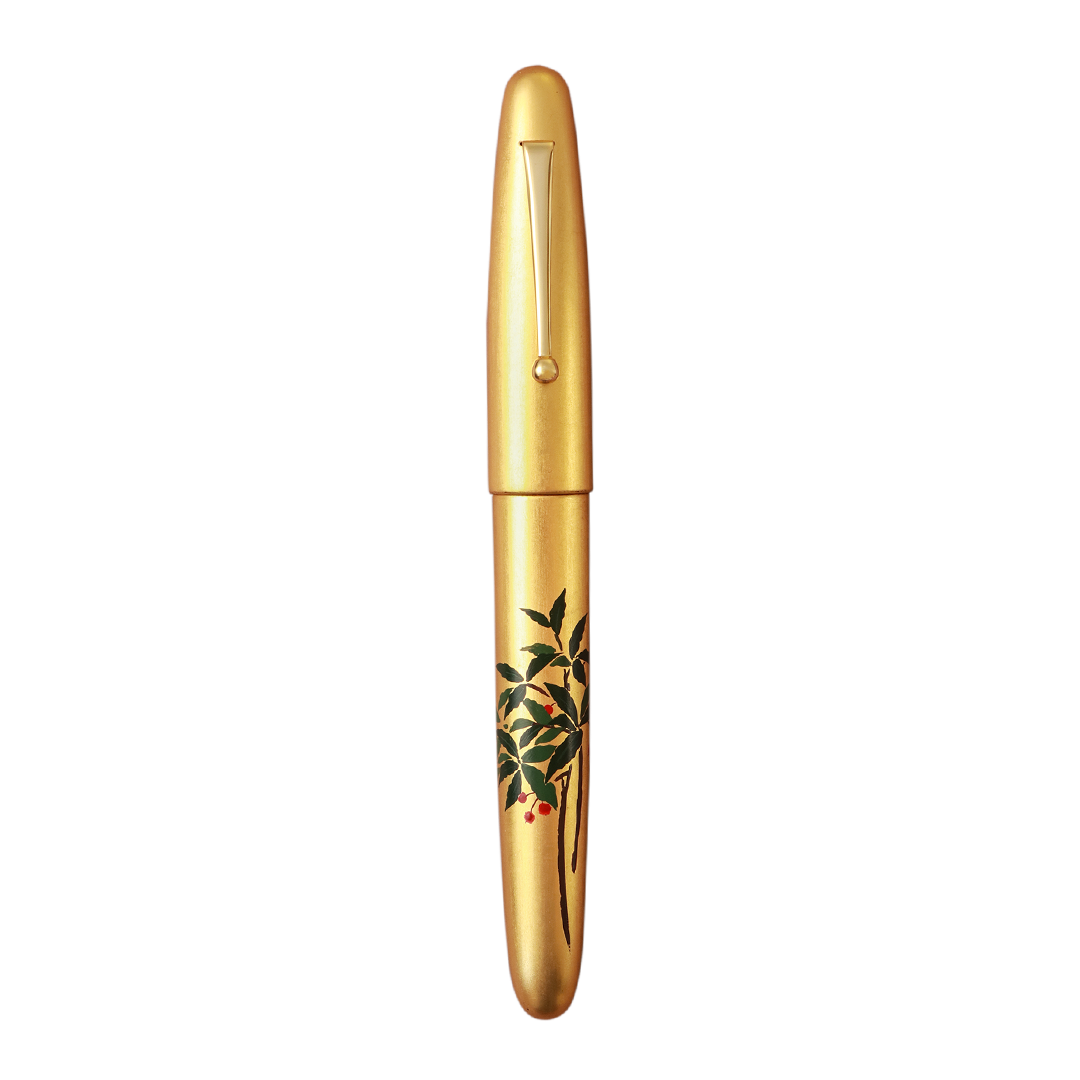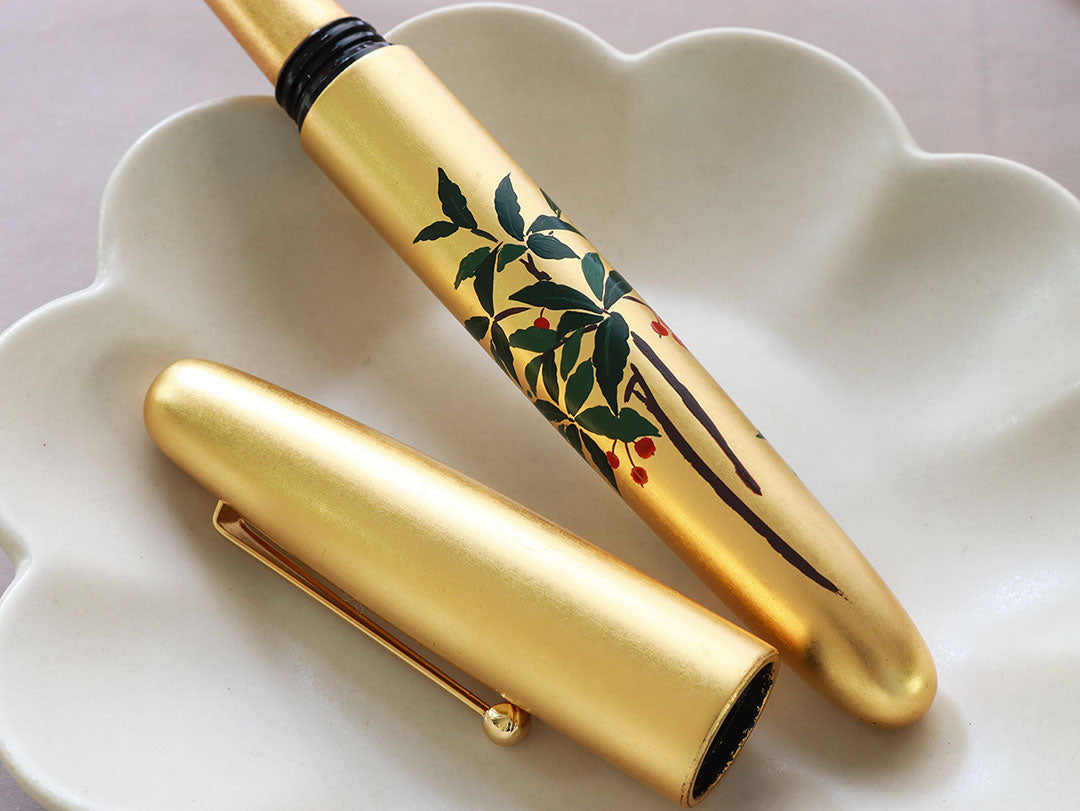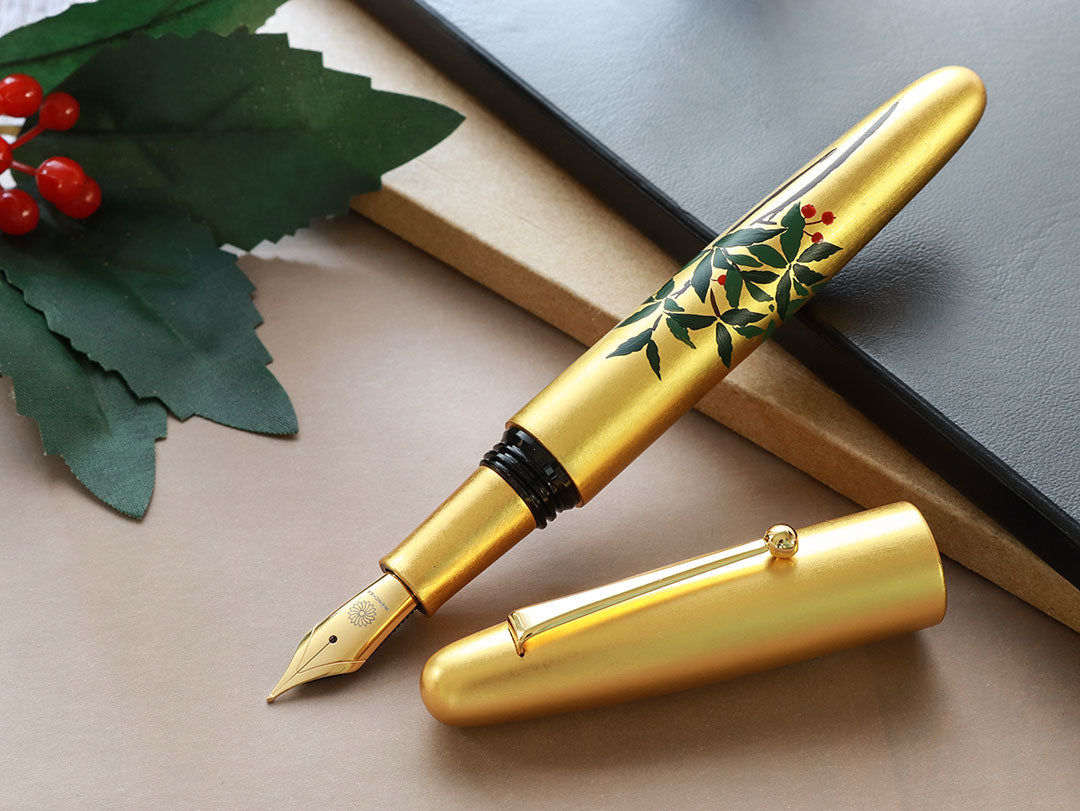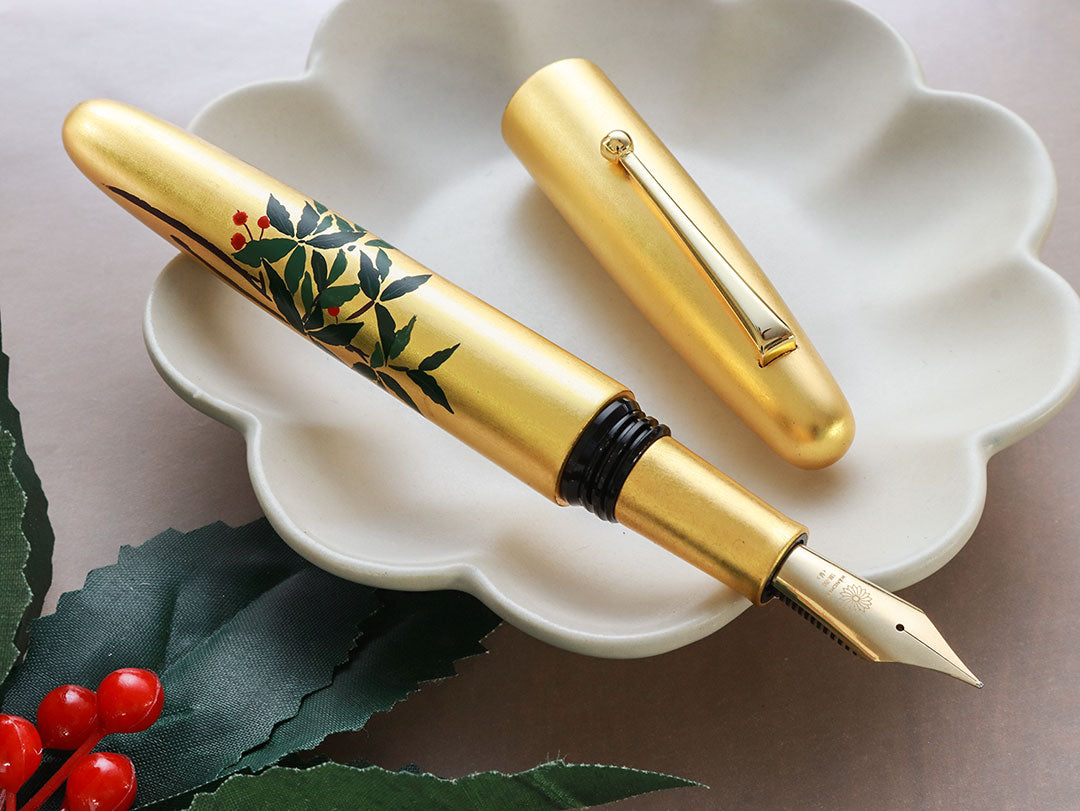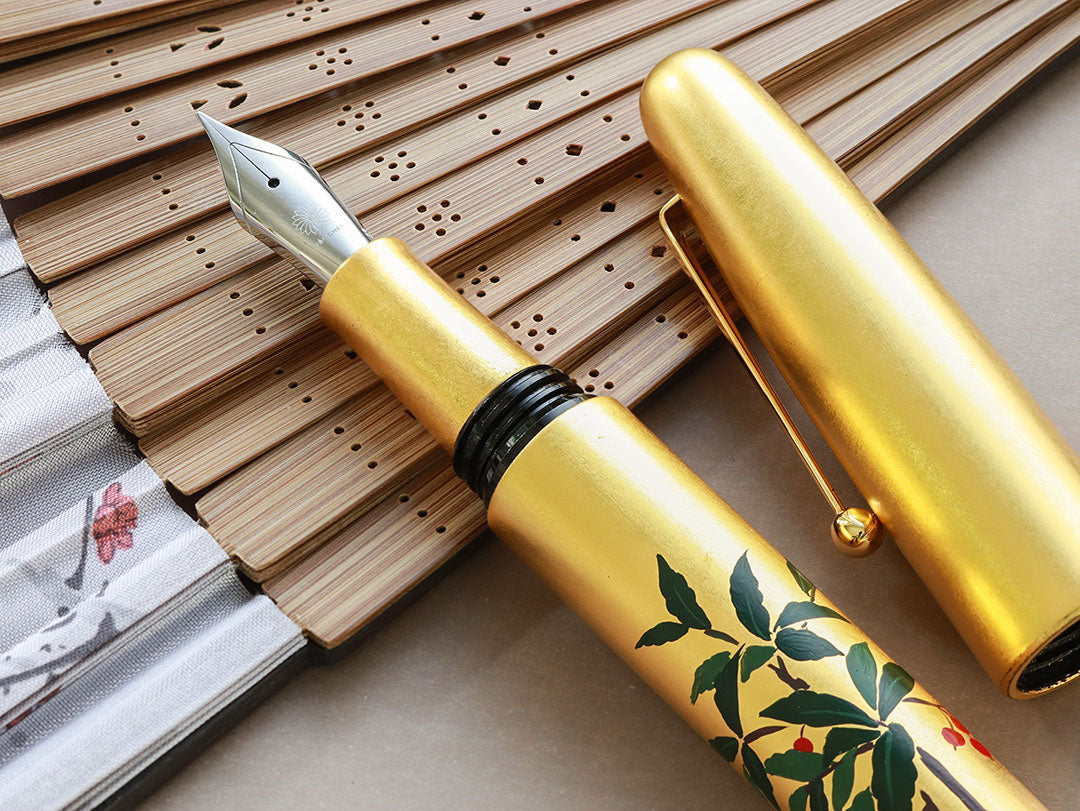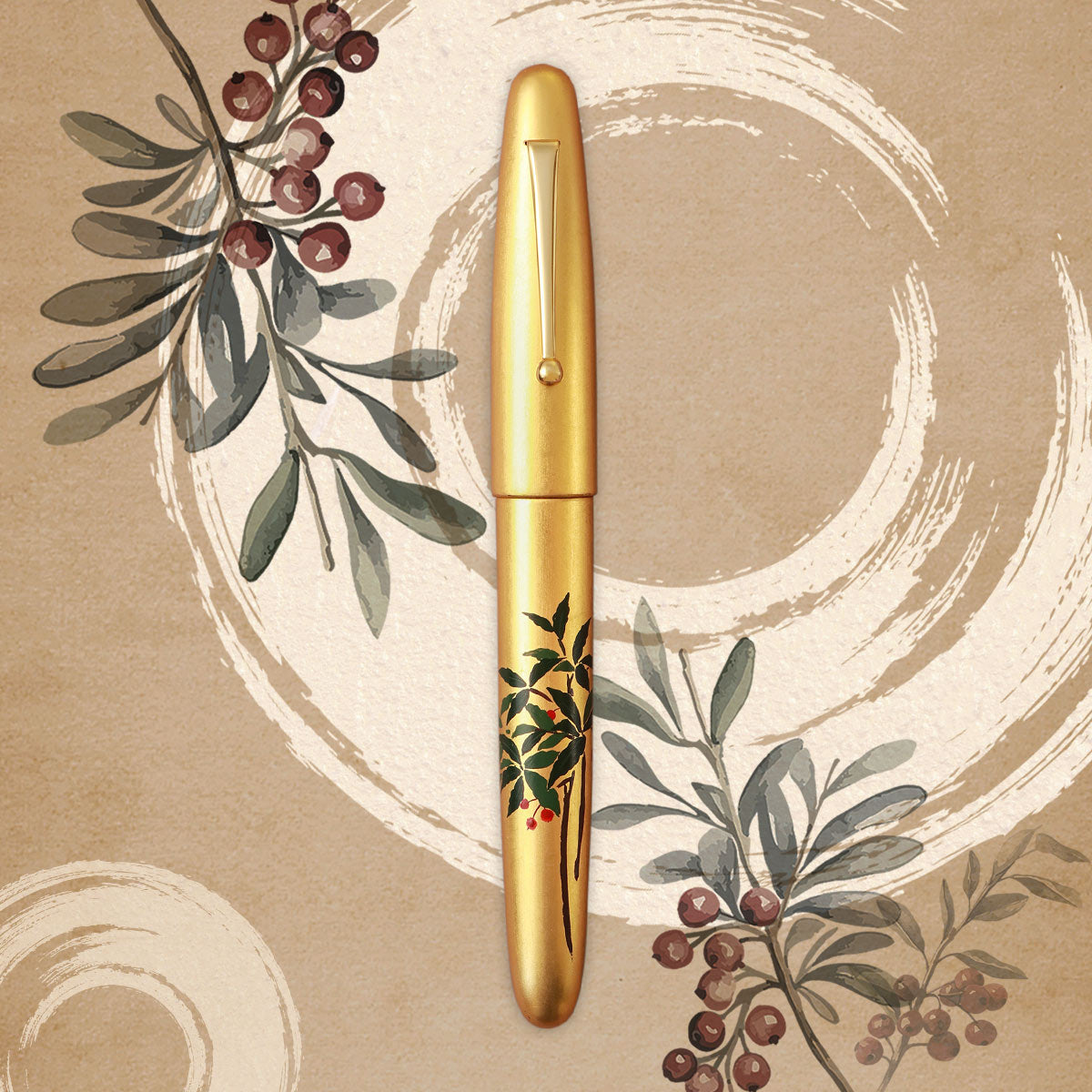Hirota Urushi - Kinpaku Maki-e - Manryou
Hirota Urushi - Kinpaku Maki-e - Manryou
Couldn't load pickup availability
Description
Description
Important Notice: The hand-making process makes every single pen a unique one; there is no pen exactly resembling one another. The one you will receive might be slightly different from the one here in the pictures, but if you appreciate the beauty of hand-craftsmanship, you will be happy with the pen we've made for you.
Hirota Urushi
Hirota Urushi is the Japanese traditional Urushi art hand-crafted by master Hirota Yoko (廣田洋子). Master Hirota's artworks are unique in designs and techniques, which are hard to find among common Urushi lacquerware.
There are 4 main techniques normally used in Master Hirota's art:
- 櫛目堆漆塗 (Kushime Tsuishitsu Nuri)
- 金箔 (Kinpaku)
- 石目堆漆塗蒟醤 (Ishime Tsuishitsu Nuri)
- 金彩ひび塗 (Kinsai Hibi Nuri)
Fountain pens from Hirota collection are handmade one by one and require years to create. Therefore, each design is limited to only 1-3 pieces.
Kinpaku
Kinpaku is the technique of laying thin gold leaves on art objects, writing tools, tableware, and religious objects. This is done to refine and polish the appearance.
Kinpaku Maki-e Collection
Master Hirota's artisan fountain pen design is a testament to meticulous craftsmanship and unwavering attention to detail. In her latest creation, she weaves a narrative of storytelling through meticulously hand-drawn Maki-e, artfully depicting the enchanting beauty of flora.
Embracing Nature's Imperfections
In the realm of pen craftsmanship, every stroke bears the discerning touch of Master Hirota. Her drawing captures botanical wonders with a meticulous eye for detail. When exploring the intricate world of Maki-e, one cannot help but notice the delicate nuances: overlapping leaves, tender sprouts, moss on tree bark, even leaves nibbled by caterpillars - no minuscule element escapes her gaze.
While some may assume that only flawlessly pristine florals meet her exacting standards, Master Hirota perceives perfection through imperfection, finding a beauty that resonates with nature's authenticity.
Pen Design: Manryou (Christmas Berry)
Japanese people hold the Manryou plant in high regard, considering it a virtuous and auspicious plant. The name "Manryou" stems from the Japanese word "Man," meaning ten thousand. This name signifies the plant's exceptional beauty and value, as it is believed to surpass the Senryo plant, which is already considered quite stunning. Manryou's allure is said to be worth tens of thousands of dollars, symbolizing its unparalleled magnificence.
Master Hirota, with her keen eye for detail and personal touch, delicately incorporates a subtle branch of Manryou into her pen design. This small yet significant addition serves to depict the humble beginnings of the Manryou plant before it matures into undeniable charm. It represents the journey of growth and transformation, where even the most unassuming beginnings can blossom into extraordinary beauty.
Through the inclusion of the Manryou branch, Master Hirota pays homage to the plant's inherent grace and showcases its potential to captivate and enchant. The pen becomes not just a tool for writing but also a vessel for celebrating the subtle yet profound beauty found in the natural world.
Pen Body
The whole body of the pen is covered with gold leaf sheet or Kinpaku with more than one layer. Therefore, delicate care for the body is highly recommended. Like every Urushi pen, Hirota Kinpaku Maki-e pens must be stored in a low-humidity environment and must be refrained from long exposure to direct sunlight to protect their color.
The original design by Master Hirota's inspiration came from her very own garden. Every day the plant is on her side, passing the time together.
About Master Hirota Yoko
With a great interest in traditional handmade crafts since elementary school, Master Hirota decided to choose this path and developed a strong passion for Japanese Urushi-making traditions. Master Hirota now has more than 30 years of hands-on experience in making Urushi and Maki-e.
Hirota's artwork focus on the stylish minimalism and durability of the objects. Either it's a pair of chopsticks that serve everyday meals, or it's an ornament used in the palace, it must last long and express the aesthetics of Japan's art.

Specifications
Material & art: Ebonite, Urushi, Kinpaku, Maki-e
Filling mechanism: Converter or Cartridge (European International Standard)
Nib: #6 Jowo stainless steel, Wancher 18K gold
Feed: Plastic, ebonite black, ebonite red
Compact air-tight cap: Preven dried-out ink problem

Size & Shape

Packaging
Traditional Japanese Wooden Box + Cartridge & Converter + Instructional Materials
Duties & Taxes
Duties & Taxes
For international orders, customers are responsible for any sales tax, duties, brokerage fees, and / or other taxes imposed by the government of the destination country, in addition to the quoted or invoiced price.
Learn about Wancher's terms of service for our premium fountain pens and writing instruments. Find important information on purchases, warranties, and customer rights. Essential reading for all Wancher pen enthusiasts and collectors.Share
